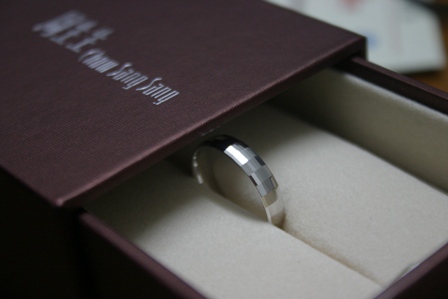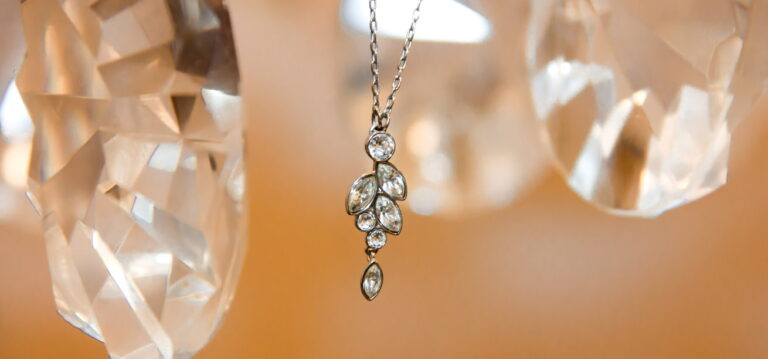A Glance at China’s Jewelry Market
In recent years, thanks to improved living conditions, and population consumption; jewelry consumption has also increased. Indeed, in 2014, global sales of jewelry has reached around USD 195 million, which represents a significant jump of 26.03%, representing 57.86% of further global sales of luxury goods. China is one of the largest jewelry consumers in the world. In the same year, jewelry sales in China were estimated at 78.5 billion USD or 41.2% of world consumption. china has about 50% of the total consumption of jewelry, with a taste thrust for consumption of gold jewelry. The decline in gold prices triggered spending spree; Moreover, the volume of China’s jewelry sales increased considerably. In addition, in order to meet local demand, China export many jewelry items. It exported jewelry with a total value of 49.06 billion USD.
China’s Leading Brands
 Jewelry sales in China increased by 5% in 2015 in terms of current retail value, or 593.4 billion CNY. With the increase of available income and the increasing focus on physical appearances. Jewelry is increasingly seen as an important element of fashion, which is essential to be more distinguished. Furthermore, Chinese consumers considered actual jewelry as an investment tool to increase their wealth in case of a country’s economic recession.
Jewelry sales in China increased by 5% in 2015 in terms of current retail value, or 593.4 billion CNY. With the increase of available income and the increasing focus on physical appearances. Jewelry is increasingly seen as an important element of fashion, which is essential to be more distinguished. Furthermore, Chinese consumers considered actual jewelry as an investment tool to increase their wealth in case of a country’s economic recession.
The biggest known jewelry brands in China are Shanghai Yuyuan, Chow Tai Fook, Lao Feng Xiang, Tourist Mart, Chow Sang Sang and Luk Fook. In 2013, Chow Tai Fook has occupied the largest position in the Chinese market with 8.63% (in terms of sales), followed by Lao Feng Xiang with 5.34%. Chow Tai Fook: During recent years, it has set up the retail network development in the second, third and fourth largest cities of China. Over 65% of new stores opened by the company are located in third-tier cities.
- Chow Tai Fook Jewellery Group Ltd (in Chinese周大福珠寶集團有限公司) was the pioneer in the jewelry market in China in 2014, with a share of the retail value of 6%. The company has fixed the objective of meeting the various customer segments through its broad product portfolio, which is constantly renewed. Chow Tai Fook has worked with multinational partners such as De Beers, Disney, and Korean celebrities, to not only extend its product collections but also enhance the brand exposure. The Outlet expansion keeps steady growth; at the end of March 2015, the Company held 1992 China jewelry outlets, with an entry in the lower-tier cities to boost its sales.
- Lao Feng Xiang: distributors and franchisees possess large proportions of the market. Lao Feng Xiang opens its first store abroad in Sydney in 2012; At the end of 2013, there were approximately 2624 retail outlets, with over 1,550 distributors and 916 franchises. And in 2014 and 2015, the Fifth Avenue flagship store in New York and Tsim Sha Tsui store in Hong Kong was officially opened. Currently, Lao Feng Xiang is preparing for the construction of the Canadian division and Vancouver jewelry store.
- Shanghai Yuyuan Tourist Mart: Shanghai Yuyuan Tourist Mart is associated with the “Jewelry Yayi and” Lao Miao Gold “in Shanghai Yuyuan Gold Jewellery Group Limited, with an increase in sales of 14%.
- Chow Sang Sang (in Chinese 周生生): Chow Sang Sang adopts the self-operating mode. Shandong Weifang has opened 32 new stores in Yancheng in Jiangsu, Zhejiang, Huzhou, Datong, Shanxi, and other cities; the CEO added a new store in Tuen Mun V-City, Mong Kok and Jordan district in Hong Kong.
China’s jewelry market has experienced a steady pace of growth in recent years. From 2008-2014, the average annual increase of big companies in retail sales and retail increased by 30.4%. In 2013, the level of jewelry retail sales was 16.0%. Then in April 2014, the decline in gold prices has triggered a wave of buying gold frenzy among Chinese people, representing a year on year growth of 72.2 %.
China’s Channels of Distribution
Jewels are mainly distributed through stores and on the Internet. in recent years, with the advent of the Internet, Chinese jewelry companies started in the internet marketing era. The level of E-commerce sales rose by 0.5% in 2009 to 4.0% in 2014. The O2O e-commerce method in China is now in prime position: giants jewelry brands develop online marketing channels. For instance, to expand Internet marketing channel, Ming Jewelry was set in Jingdong Mall in September 2014 and has, therefore, multiply their sales within a year.
In recent years, the jewelry market development in China has experienced great growth. However, the development of the jewelry industry of China is still facing opportunities, because of a lack of general marketing skills.
If you enjoy reading this article and would like to know more about China’s market, contact us at the following address, dx@daxueconsulting.com
See also our services:





